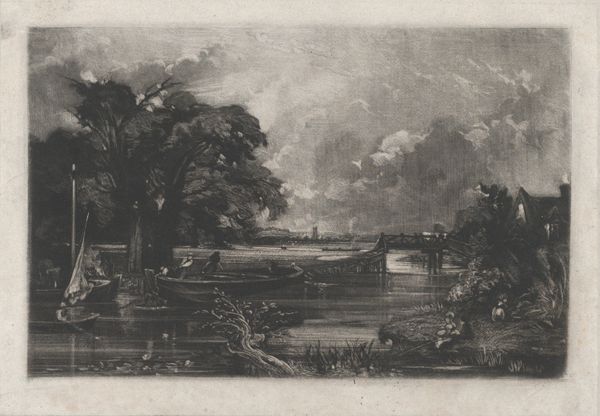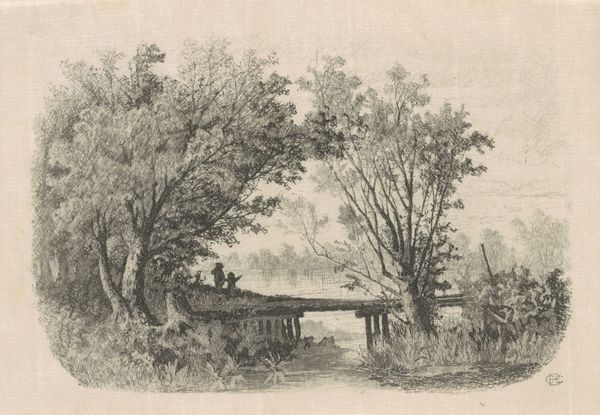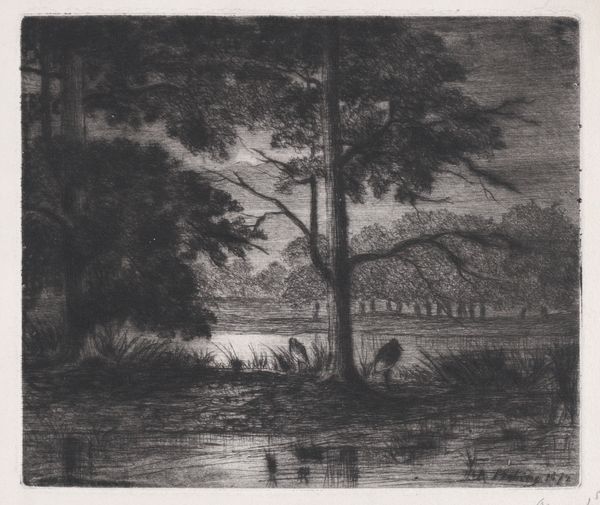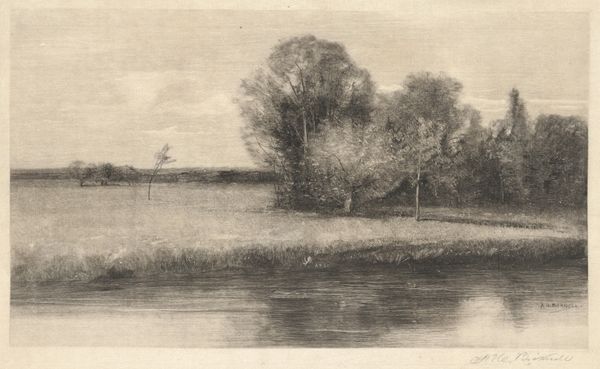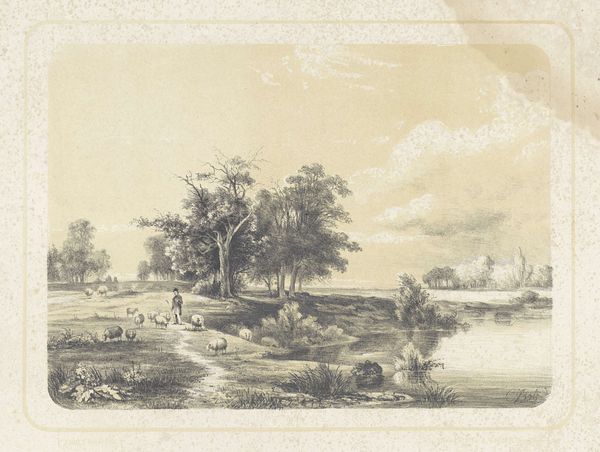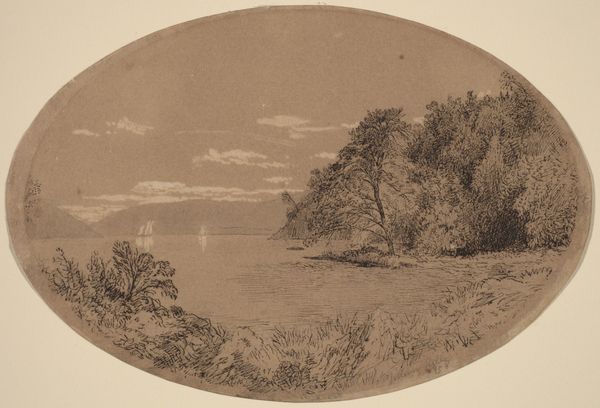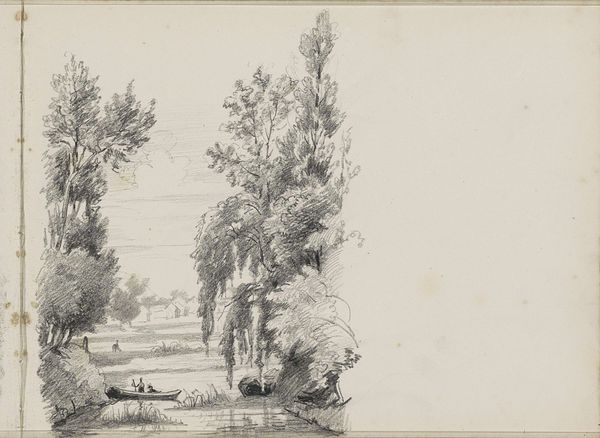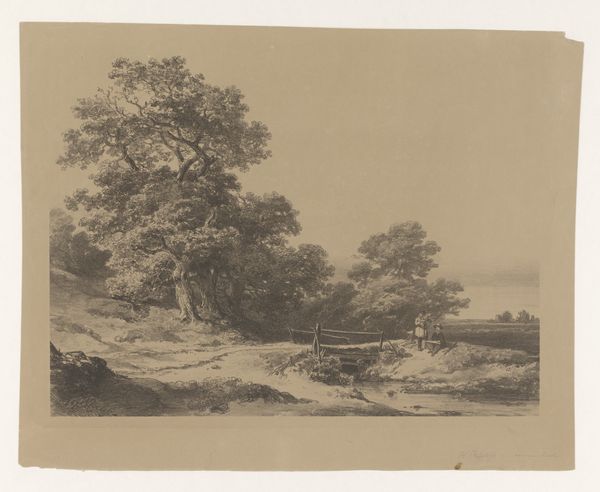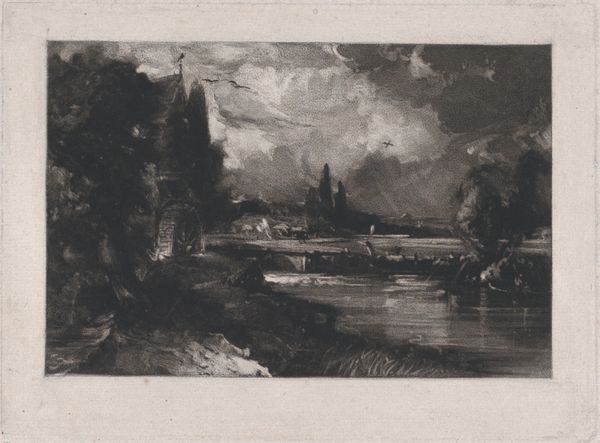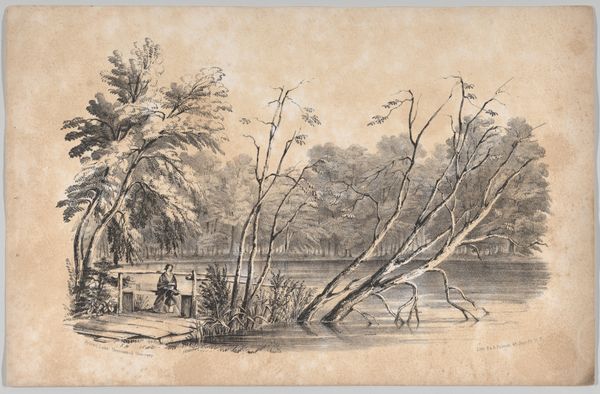
drawing, print, etching
#
tree
#
drawing
#
boat
# print
#
etching
#
landscape
#
river
#
geometric
#
line
Dimensions: Image: 5 11/16 × 8 11/16 in. (14.4 × 22.1 cm) Plate: 8 1/4 × 10 in. (21 × 25.4 cm) Sheet: 9 11/16 in. × 14 in. (24.6 × 35.6 cm)
Copyright: Public Domain
Editor: Here we have David Lucas's "River Stour", a print, etching and drawing, created sometime between 1830 and 1831. It's such a beautifully rendered landscape, and its monochrome palette definitely sets a rather tranquil mood. What are your initial thoughts looking at it? Curator: Well, this print comes from a time when landscape painting was becoming increasingly popular, driven by Romantic ideals of nature and the picturesque. Constable’s influence, especially, helped elevate the Stour valley, his home, to a subject worthy of artistic exploration. Think about how the image itself presents an idealized view of rural life. Notice the working boats, the quiet river – what might these elements signify to its intended audience? Editor: I guess they represent a kind of idealized, peaceful existence away from the burgeoning industrial revolution that was happening at the time? Was there a political message embedded in portraying the countryside so idyllically? Curator: Absolutely! There was a nostalgia, a looking back to a perceived simpler time. Consider the Corn Laws debate that raged during this period. Landowners used imagery like this, albeit subtly, to bolster their arguments about the importance of agriculture and the rural way of life in the face of industrial advancement. Does knowing this change how you see the image? Editor: It definitely does. It’s easy to get caught up in the aesthetic beauty, but knowing its place in that historical argument gives it a new dimension. So much for a tranquil scene! Curator: Exactly. It makes you consider the social and political forces influencing the art and how even landscapes could become tools in a broader cultural debate. Editor: That’s really fascinating; it's made me think differently about the power of landscape art. Curator: And that’s what looking at art through a historical lens does - it deepens our understanding and appreciation of the artist's choices within the wider societal context.
Comments
No comments
Be the first to comment and join the conversation on the ultimate creative platform.
